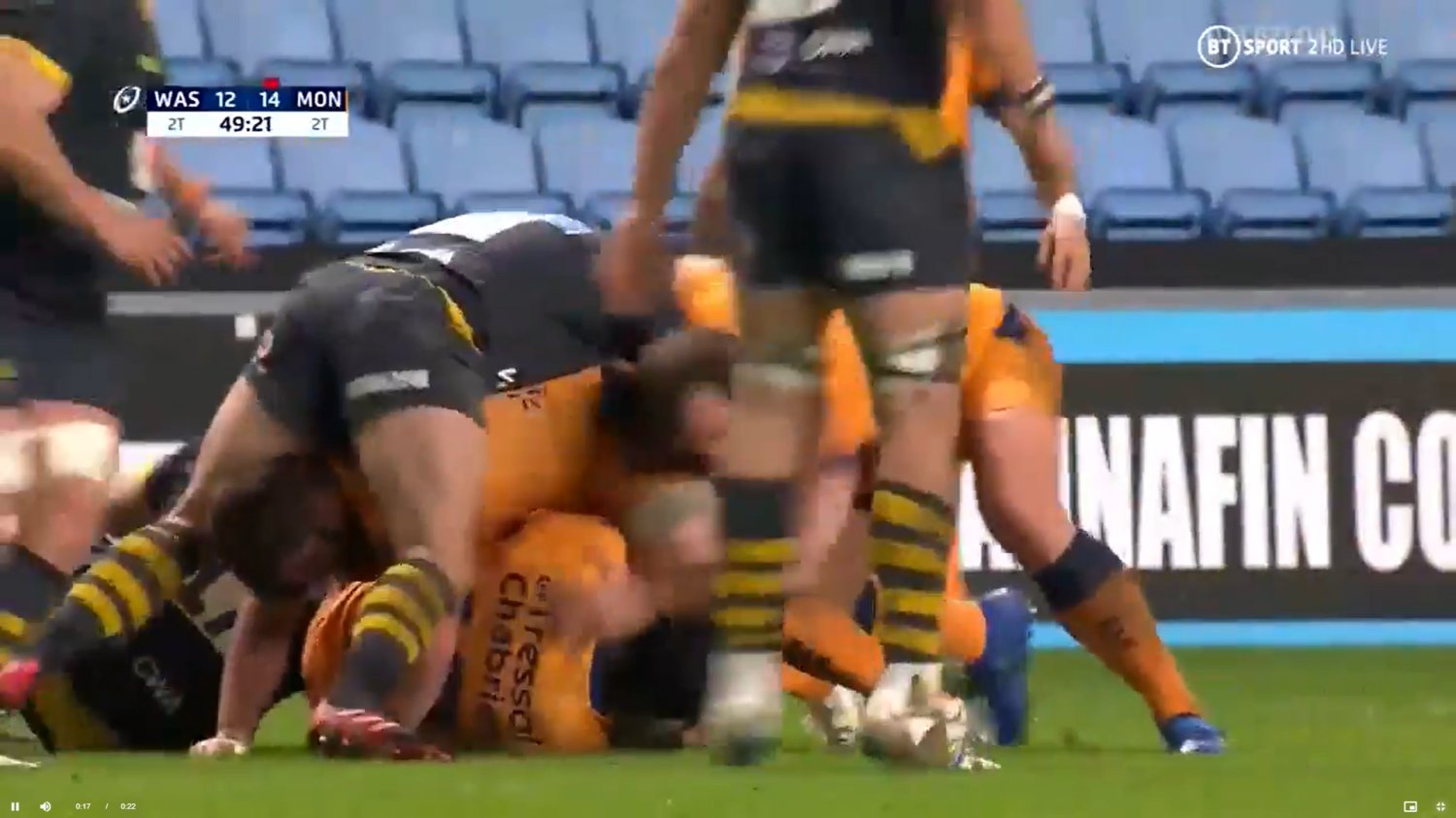Explainer: The 50:22, Goal line drop-out & the other new law variations and how they work
- 19441

The Rugby Championship officially kicks off this weekend right off the back of the British and Irish Lions series and with it comes the introduction of the new law variation for test rugby this year.
The laws were in place for the opening Bledisloe Cup test last weekend but will run right through to the end of year tests.
The World Rugby Byelaws have agreed to approve the following Global Law Trials for implementation for competitions commencing on or after August 1, 2021:
- 50:22: If the team in possession kicks the ball from their own half indirectly into touch inside their opponents’ 22, they will throw into the resultant lineout. The ball cannot be passed or carried back into the defensive half for the 50:22 to be played. The phase must originate inside the defensive half.
- Goal-line drop-out: If the ball is held up in-goal or there is a knock-on from an attacking player in in-goal or an attacking kick is grounded by the defenders in their own in-goal, then play restarts with a goal line drop-out anywhere along the goal line.
- Flying Wedge: To sanction the three-person pre-bound mini-scrum by redefining the flying wedge.
- 1 man latch: To recognise the potential for 1-player pre-latching prior to contact, but this player must observe all of the requirements for a first arriving player, particularly the need to stay on their feet.
- Cleanout and safety of the Jackler: To introduce a sanction for clean outs which target or drop weight onto the lower limbs.
World Rugby has also approved a SANZAAR request to use the 20-minute Red Card law trial in The Rugby Championship 2021 (and Bledisloe Cup matches).
- If a player is red-carded, they may be replaced after 20 minutes by another player. The 20mins from when a player is red-carded to when they may be replaced is measured as “game time”. This follows the same measurement of time already in place for a yellow-carded player in the sin bin (meaning sin bin clock is stopped when the game clock is stopped).
- A player receives a yellow card and is sin-binned for 10mins. If the same player, then returns to the field after serving their 10 mins suspension and subsequently receives a 2nd yellow card, which equates to an automatic red card. After a further 20 mins the red-carded player can be replaced.
- A player who has been tactically replaced is able to return to the field to replace a red-carded player.
- No red carded player cannot return under any circumstance.
HOW THE LAWS WORK:
The 50:22
An adaption on the Rugby League 40/20 rule, the 50:22 law sees a team retain possession of the ball if the team in possession kicks the ball from inside their own half indirectly into touch inside their opponents’ 22, meaning the ball has to bounce before crossing the touchline and, if it does, the team that kicked will have the throw-in to the resulting lineout.
The ball cannot be passed or carried back into the defensive half for the 50:22 to be played. The phase must originate inside the defensive half.
An extreme example of this would be Anthony Bouthier's kick during the 2020 Six Nations. If the law was in place for this test, France would have a lineout inside the England 22.
One from the 2020 Six Nations.
— Jared Wright (@jaredwright17) August 11, 2021
Bouthier's incredible clearance would result in a lineout for France.
pic.twitter.com/tisBmYH9zC
World Rugby have stated that the main intention of the law is to 'encourage the defensive team to put more players in the backfield, thereby creating more attacking space and reducing defensive line speed.'
Another example from the opening round of New Zealand's NPC.
It took just under 20 seconds for the first 50:22 kick in the opening game of the Bunnings NPC in New Zealand earlier.
— Murray Kinsella (@Murray_Kinsella) August 6, 2021
Counties Manukau, the kicking team, got the throw in to this lineout. pic.twitter.com/yOdToFIuek
Goal-line drop-out
The next law change deals with players being held over the try line as well as players touching the ball down over their own line.
The law variation states: 'If the ball is held up in-goal, there is a knock-on from an attacking player in in-goal or an attacking kick is grounded by the defenders in their own in-goal, then play restarts with a goal line drop-out anywhere along the goal line.'
This replaces the attacking team getting a scrum if they are held up over the line as well as a 22 drop out for a team dotting the ball down in their own in-goal. Instead of the 22 drop out or scrum, play restarts with a goal-line drop-out anywhere along the goal line.
The Primary intention of the law according to World Rugby's website is 'to encourage variety in attacking play close to the goal line and to increase ball in play time by replacing a scrum with a kick that must be taken without delay. An opportunity for counter attack is also created.'
Under the new law, the Springboks would have got a goal-line drop out for Mako Vunipola being held up over the line rather than the Lions getting the feed to the scrum 5m from the line.
In the same game, the Springboks would not have got a 22m drop out for this ground in their own in-goal area.
World Rugby states on their website that the intention of the change is 'to encourage variety in attacking play close to the goal line and to increase ball in playtime by replacing a scrum with a kick that must be taken without delay. An opportunity for the counter attack is also created.'
This is being introduced to clamp down on regular pick and drives near the try line as well as the tap and goes with a heavy forward crashing the ball up which has become a popular tactic with the likes of Leinster, Exeter Chiefs and even used by the British and Irish Lions on their tour to South Africa.
An example with Luke Cowan-Dickie during the clash against the Stormers.
In actually taking the in-goal drop out, teams are encouraged by the new law to 'take risk to play out' from their own line in an attempt to go coast to coast.
Teams could be tempted to run the ball out of in-goal instead of forcing the goal line drop out.
This one is from the WR website.
— Jared Wright (@jaredwright17) August 11, 2021
'Teams tempted to run the ball out of in-goal instead of forcing it [the goal line drop out]' pic.twitter.com/73c4Qz3n5Y
The Hurricanes also used the goal-line drop out to great effect to attack from deep during their Super Rugby Aotearoa game against the Crusaders.
So, if you are held up over the line...
— Jared Wright (@jaredwright17) August 11, 2021
The defending team get a goal-line dropout. The Hurricanes did well with one of these in SR Aotearoa
pic.twitter.com/V7dUKBmHSX
The Flying Wedge
'The Flying Wedge' will result in a penalty and the intention of the law is to stop three players from pre-binding to form what is described as a 'mini-scrum'. This tactic has been used regularly in the Premiership and often when a player picks and goes from the base of the ruck. Two of their teammates bind either side of the ball carrier making it more difficult for the defence to tackle the ball carrier or even compete at the ruck once the tackle has been made.
World Rugby state that the primary intention is 'to reduce number of events where the ball carrier and multiple support players are in contact (latched) prior to contact, and to protect the tackler who can be faced with the combined force of three opposing players.'
The flying wedge they refer to is pretty popular in the Premiership.
— Jared Wright (@jaredwright17) August 11, 2021
Basically don't want a two man pre bind on the ball carrier.
Again, another example from the WR website. https://t.co/PWxGtcf17P pic.twitter.com/gdG3Gnhvrr
1 man latch
The '1 man latch' law variation is another law around players binding pre-contact.
There will now be a focus on the player observing all of the requirements for a first arriving player, particularly the need to stay on their feet.
The primary intention is 'to be more consistent in the management of the 1-person pre-latched player.'
With the variation of the law, Japan's try against the Lions would not have stood as the latcher (Tavita Tatafu) is in front of ball-carrier (Kazuki Himeno) meaning the defender (Faletau & Farrell) does not have clear entry to ball-carrier; should be obstruction penalty
The Lions forwards have been daring Japan to throw to the tail all game and this time Atsushi Sakate hits his target.
— EK Rugby Analysis (@ek_rugby) June 26, 2021
Fantastic leg-drive from Kazuki Himeno, with help from Tavita Tatafu, to score having peeled around from the front of the lineout.#BILvJPN #LionsRugby pic.twitter.com/rW8CfKCWMa
Another example of this occurs when the player latching on the ball carrier, effectively seals off the ruck as the two attackers go to ground.
Notice how the Montpellier (orange) player has sealed off the ruck and is not supporting his body weight making it impossible for Wasps to compete for the ball.

Cleanout and safety of the Jackler:
The final law variation targets the cleanouts at the rucks that have resulted in numerous knee injuries. The tactic referred to by many as the 'crocodile roll' will now be penalised in order to reduce injury risk to the player being cleaned out.
Cleanout and safety of the Jackler.
— Jared Wright (@jaredwright17) August 11, 2021
'To reduce injury risk to the player being cleaned out.'
A look at getting rid of the crocodile roll which many have actually called for.
Another example from the website, this will be a penalty against Watson. pic.twitter.com/WzgVa7rCps
This is a law change for which former Fiji 7s head coach Ben Ryan has been calling some time now. It is not just the crocodile roll that will be penalised but a number of dangerous cleanouts.
Examples:
BAN THEM NOW: These sort of croc rolls are happening at all levels of the game. It’s at its most dangerous in this clip when the attacking clean plants his body weight on the defenders leg before rolling. If you’ve got your own examples then post them on this thread. pic.twitter.com/Zb6lyfGp1I
— Ben Ryan (@benjaminryan) February 17, 2021
Toby Flood off field for HIA after this. Flood’s shoulders below his hips and 3 tigers clear out and none are attempting to stay on their feet. That’s law being broken just the four times. It’s so common now - no one bats an eyelid about it anymore. The game cannot sustain this. pic.twitter.com/o1rUYG8cj1
— Ben Ryan (@benjaminryan) April 12, 2019
The 20-minute red card
Finally, the Rugby Championship will trial the 20-minute red card law. This will allow teams to replace a red-carded player after 20 minutes of their sending off. This follows the same process of a yellow-carded player but once those 20 minutes are up, that red-carded player may not return to the field. They may be replaced by a reserve on the bench. A player who has been tactically replaced is able to return to the field to replace a red-carded player.
This was trailed in Super Rugby AU and in the Rainbow Cup.
View this post on Instagram
|
|
|||||||||||||||||||||||||||||||||||||||||||||||||||||||||||||||||||||||||||||||||||||||||||||||||||||||||||||||||||||||||||||||||||||||||||||||||||||||
|
|
|||||||||||||||||||||||||||||||||||||||||||||||||||||||||||||||||||||||||||||||||||||||||||||||||||||||||||||||||||||||||||||||||||||||||||||||||||||||
|




































